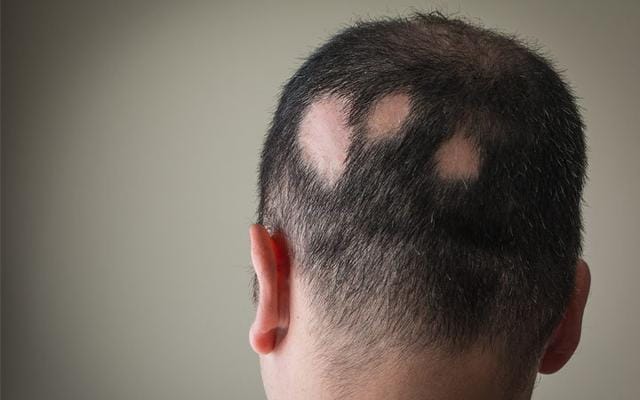When people have alopecia areata, their hair starts to fall out, leaving circular bald spots. They may shed some of their body hair as well. The missing hair could grow back soon afterward or years later.
In some cases, people see regrowth only to lose their hair once again. Worst of all, about 5 percent of alopecia areata patients lose every single hair on their bodies, including the hair in their noses.
Across the globe, approximately 147 million people are suffering from alopecia areata or will have to deal with it at some time. This disorder most frequently strikes children, teenagers, and young adults, although people of any age can be affected by it.
At this point, you may be wondering: What are the main alopecia areata causes?
BLAME ALOPECIA AREATA ON THE GENES
You can’t catch alopecia areata from someone who has it. Rather, it’s an autoimmune disorder. In fact, it’s the most prevalent of all autoimmune diseases.
If you have alopecia areata, your immune system sees your hair follicles as foreign objects, and it attacks them. As such, it’s a complex polygenic disease. That means it isn’t caused by one gene that wreaks havoc. Instead, it emerges when a group of genes, in essence, miscommunicate with each other.
Geneticists hope to someday identify all of the genes that are involved in bringing about alopecia areata. So far, around 20 of the culprits have been found.
The genetic problem that induces alopecia areata is an inherited trait that comes from one or both parents. However, if you have this condition, you shouldn’t be too worried that your kids will also have it. In most instances, the children of alopecia areata patients never experience this disorder’s effects. In part, that’s because the disease is so complicated and involves so many genes.
INITIATING HAIR LOSS
Many people go through a bout of alopecia areata only to see their hair grow back fully. That leads to a question: Why does this disorder appear and then disappear? Moreover, why does it affect one person at, say, age 5 and another at age 21? There must be physical, chemical or psychological triggers that prompt the genes to misbehave.
Medical researchers are currently searching for those triggers. They could include what people eat or what they encounter in their surroundings. A certain virus or other microbes might be responsible. An imbalance of hormones or another hormonal situation may contribute to the problem as well.
Perhaps other medical issues can induce or worsen alopecia areata, such as allergies and eczema. Most likely, it involves a combination of factors. Right now, though, the matter is largely mysterious.
Stress, however, does not seem to be a major root cause. It may be true that frequent negative stress can lead to some types of hair loss, and it could play a role in some alopecia areata patients. Nevertheless, there’s no firm scientific evidence to link stress to alopecia areata.
ALOPECIA AREATA RESEARCH STUDIES IN MURFREESBORO
While scientists continue to search for the biological, lifestyle and environmental causes of alopecia areata, you should know that medical care for this condition is readily accessible. To join an alopecia areata research study, you can call (615) 410-3460 or visit our website by clicking here.

